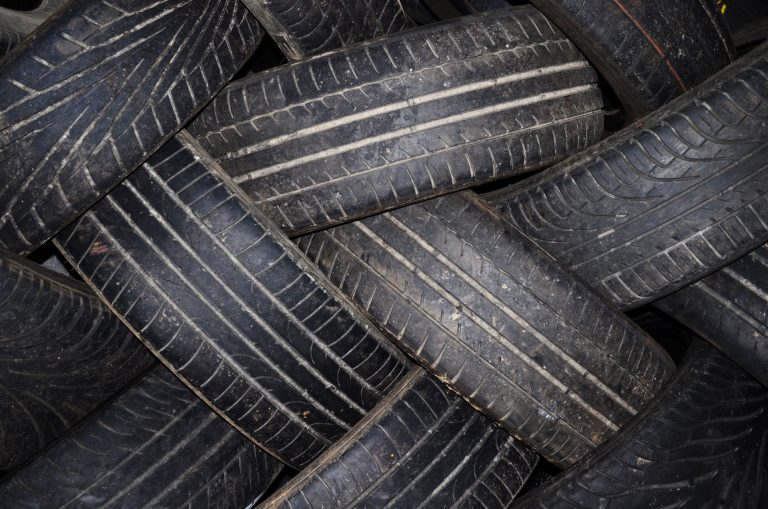A major way to reduce plastic waste? Recycling tires

Discarded automobile tires are a well-known source of waste, clogging up landfills and providing a haven for mosquito larvae. Globally, an estimated one billion tires reach the end of their useful lives every year.
We usually think of tires as being made from rubber, but they actually don’t include much natural rubber any more. Instead, they contain a complex mixture of synthetic materials, including plastics like polyester, to make them stronger and more weatherproof.
All 10 Canadian provinces and the Yukon Territory have scrap tire programs whose goal is to divert 100 per cent of used tires from landfill and recycle them into new products. Across Canada, companies have sprung up to turn tires into everything from roof tiles to playground equipment.
In Alberta, Eco-Flex grinds used tires into crumbs and uses them to make industrial walkways, curb ramps, highway rumble strips, and even a helicopter landing pad. They recently released a new product called the eco-wall, a modular wall made entirely of recycled rubber. The wall makes an excellent sound barrier for lining highways, and the company claims it will last for 50 to 100 years without requiring any maintenance.
Also in Alberta is Euroshield, which turns old tires into roof shingles. Producing enough shingles for an average-sized roof uses between 250 and 1,000 tires, and any scrap material can be recycled again. The company claims its newest product is guaranteed to be proof against any size of hail for 20 years.
Across the country in New Brunswick, TRACC uses old tires to create garden mulch, construction equipment, and surfaces for children’s playgrounds. The company says it has so far diverted 500 million pounds of waste tires from landfills.
So when it comes time to replace the tires on your car, think about how your old ones may live on alongside a highway, under your kids’ feet, or even on your neighbour’s roof.
